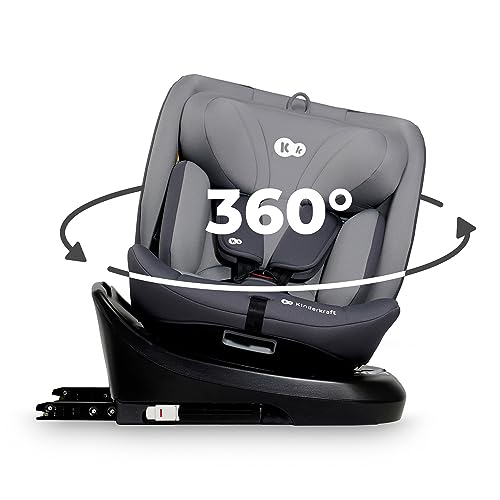Transitioning from Pram to Stroller: A Comprehensive Guide for Parents
Navigating the world of baby equipment can be frustrating for brand-new parents, specifically when it concerns picking in between prams and strollers. Both serve important functions, however they are developed for different requirements and phases of a kid's development. This post aims to inform parents about the transition from prams to strollers, outlining the advantages and considerations while supplying useful suggestions.
Understanding Prams and Strollers
Before diving into their differences, it's crucial to understand what makes up a pram and a stroller.
Prams:
A pram, short for perambulator, is generally created for infants as much as around six months old. It features a flat, cushioned sleeping area and is mostly meant for carrying really young kids. Prams are developed for comfort and security, as newborns require to lie flat to support their spine and organs.
Strollers:
Strollers, or pushchairs, are developed for slightly older children who can sit up unaided. They can be found in various styles and setups, from light-weight umbrella strollers to heavier-duty designs appropriate for rough surfaces. Strollers are more versatile and much easier to navigate in crowded areas, making them a popular choice for active households.
Benefits of Transitioning from Pram to Stroller
- Increased Mobility and Convenience
Strollers are typically lighter and more compact than prams, making them simpler to steer through shops, public transport, and crowded areas. Pushchair Shops of strollers can fold quickly, enabling hassle-free storage. - Adaptability for Different Activities
Modern strollers typically feature multiple configurations and can accommodate numerous activities, including running, outdoor experiences, and shopping journeys. They can also adapt to suit kids of various ages and weights. - Improved Child Comfort and Safety
Lots of strollers now come equipped with innovative safety features, such as five-point harnesses and reclining seats, guaranteeing that older babies and young children stay comfy and safe throughout outings. - Economical Solution
Instead of purchasing both a pram and a stroller, households can purchase a top quality stroller that satisfies the requirements of their growing child, potentially conserving cash in the long run.
When to Make the Transition
The transition from a pram to a stroller generally occurs when the kid reaches around six to 7 months of age or when they can sit up unassisted. However, a number of elements can influence this transition, including:
- Child's Development: If the kid reveals signs of wanting to explore their environments, it may be time to change to a stroller.
- Family Lifestyle: Active households might require a stroller sooner to accommodate getaways and travel.
- Comfort: Observe the child's convenience level. If they appear confined in a pram or are ending up being more active, it's time to consider a stroller.
Selecting the Right Stroller
Selecting the right stroller requires cautious factor to consider of several aspects:
| Factor | Description |
|---|---|
| Safety Features | Look for sturdy building and construction, effective brakes, and harness systems. |
| Weight and Foldability | Select a light-weight stroller that is simple to fold and transport. |
| Age Appropriateness | Ensure the stroller is suited for your child's age, weight, and height. |
| Maneuverability | Check how quickly the stroller moves and turns, particularly in crowded areas. |
| Storage Space | Consider the storage capacity below the stroller and the size when folded. |
| Adjustability | Look for strollers with adjustable features, such as seat recline and deal with height. |
FAQs about Transitioning from Pram to Stroller
Q: Is it necessary to change to a stroller?A: While it's not necessary, changing to a stroller normally offers more adaptability and ease for both parent and child as they grow. Q: What includes ought to I focus on
in a stroller?A: Prioritize security features, weight, foldability, and storage capacity based upon your way of life and activities with your child. Top Pram : Can I utilize a stroller for newborns?A: Some strollers can accommodate infant vehicle seats or
have flat reclining seats, making them appropriate for
newborns. Constantly check the manufacturer's standards. Q: How can I guarantee my child is comfy in a stroller?A: Look for strollers with cushioned seats, several recline positions, and adjustable leg rests to accommodate your kid's comfort. Q: What are the very best kinds of strollers available?A: Popular types consist of umbrella strollers, running strollers, travel system strollers, and convertible strollers, each dealing with variousneeds. official statement for a Smooth Transition Test Out Different Models: Before committing to a purchase, physically test various strollers to see which one fits both you and your child best. Involve Your Child:
If they are old enough, allow your
kid to try out different strollers to see which they discover most comfy. Read Reviews: Consider looking at online reviews and suggestions from other parents to much better notify your decision
. Prepare for Storage and Transport: Factor in how the stroller will suit your car or home storage space to avoid future inconveniences.
- Evaluate Your Activities: Think about where and how you prepare to use the stroller-- metropolitan areas may require a various type compared to rural or off-road settings.
- Transitioning from a pram to a stroller is an essential turning point in a child's life and a significant choice for moms and dads. By comprehending the differences and
advantages of each, parents can make informed choices that will support their family's lifestyle and their kid's development. Equipped with the right information, moms and dads can confidently browse this transition and
ensure that their kid is safe, comfy, and all set for all the adventures ahead.

